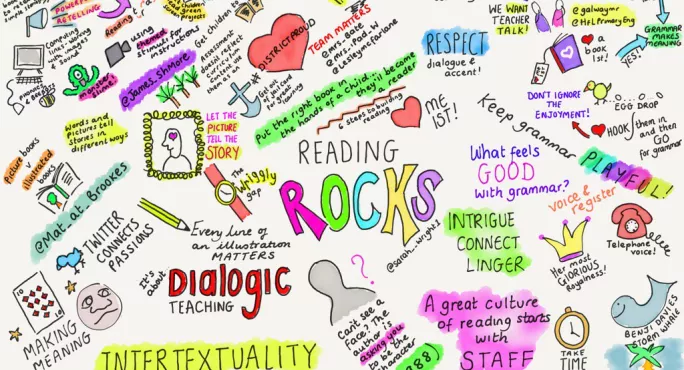What is sketchnoting?
Sketchnoting is a growing trend in education; it is basically an alternative to traditional note-taking. Rather than making bullet points or writing a narrative, you draw or doodle the key themes from a presentation or session.
Surely that can’t be as effective as taking proper notes?
It does sound a bit like colouring-in for grown-ups, but some classic theory would support the use of sketchnoting − the concept of dual coding, for example. In a nutshell, this theory suggests that mental imagery − which is a key part of sketchnoting − has a positive impact on memory.
What if I can’t draw to save my life?
There are plenty of really good tutorials on basic fonts and shapes that are a simple click away, but it’s really about creating your own visual representation of an idea and asking your brain to work in a different way.
This technique is less about your drawing skill and more about the representation that you create. Think about the process rather than the skill.
Do I need to use technology to do it?
No. Although sketchnoting with a tablet and stylus has its advantages (no need for a rubber here!), this is also something that can be done with good old-fashioned pen and paper.
Is this something I could ask my students to do?
Sketchnoting is absolutely something that you should be sharing with your students. It can bring a lively twist to a revision topic, serve as a refreshing change to mind maps and give students an opportunity to translate their learning in a different way.
How can I get started?
You can see many examples of sketchnoting on Twitter. Impact Wales shares some fabulous examples as does Sylvia Duckworth. And Mike Rohde has produced an excellent guide to getting started with the technique.
Sarah Wright is a senior lecturer at Edge Hill University. She tweets as @Sarah__wright1
Want to keep up with the latest education news and opinion? Follow TES on Twitter and like TES on Facebook





